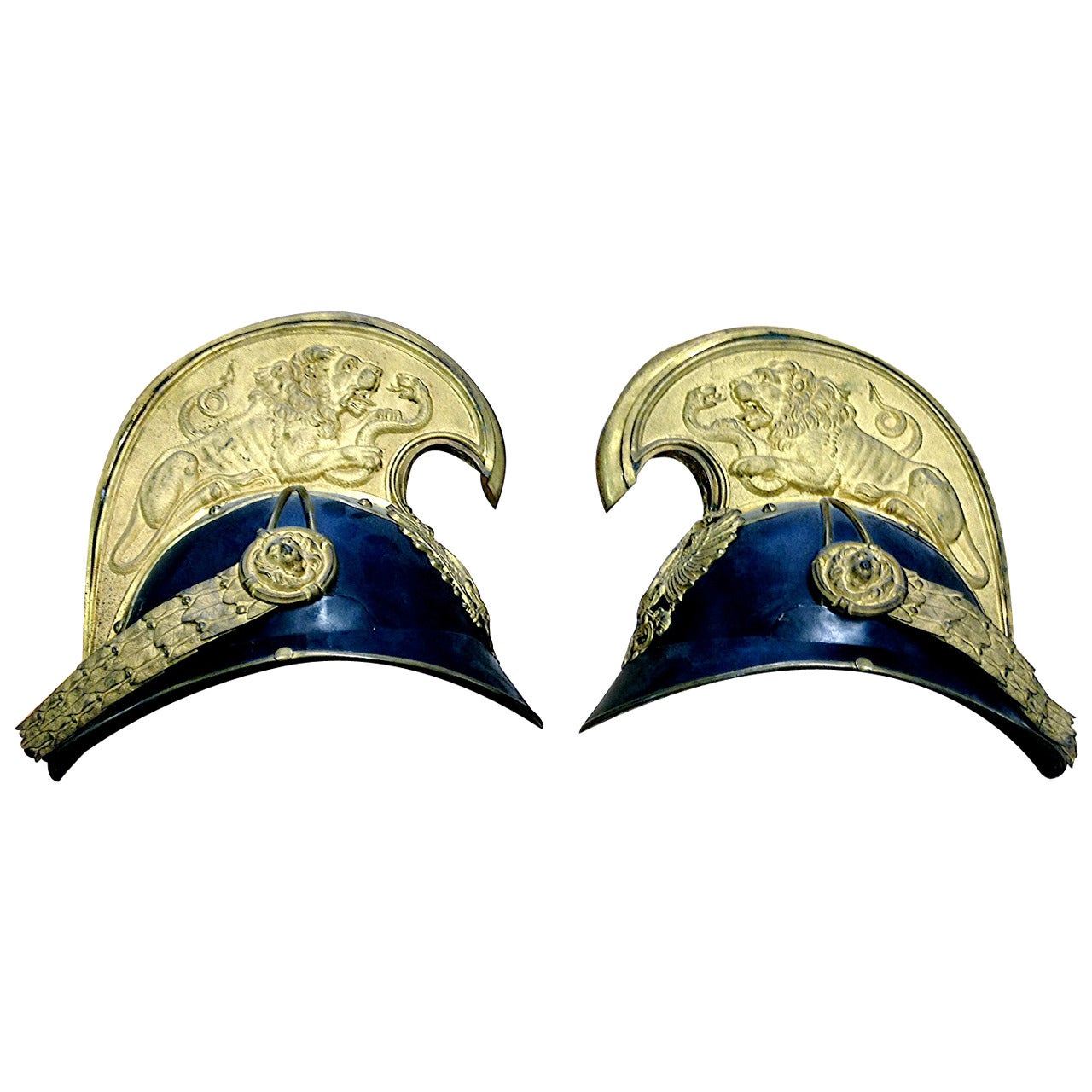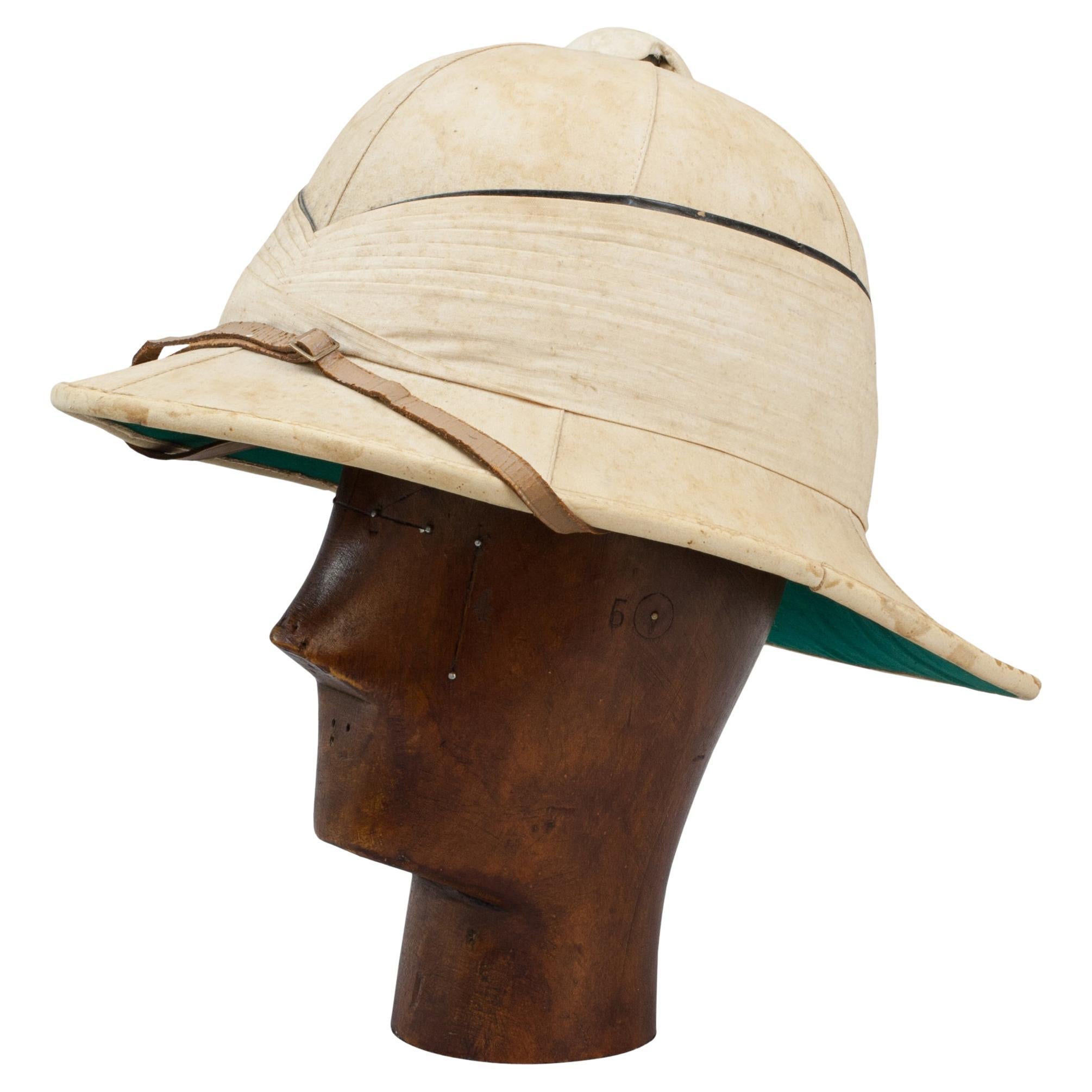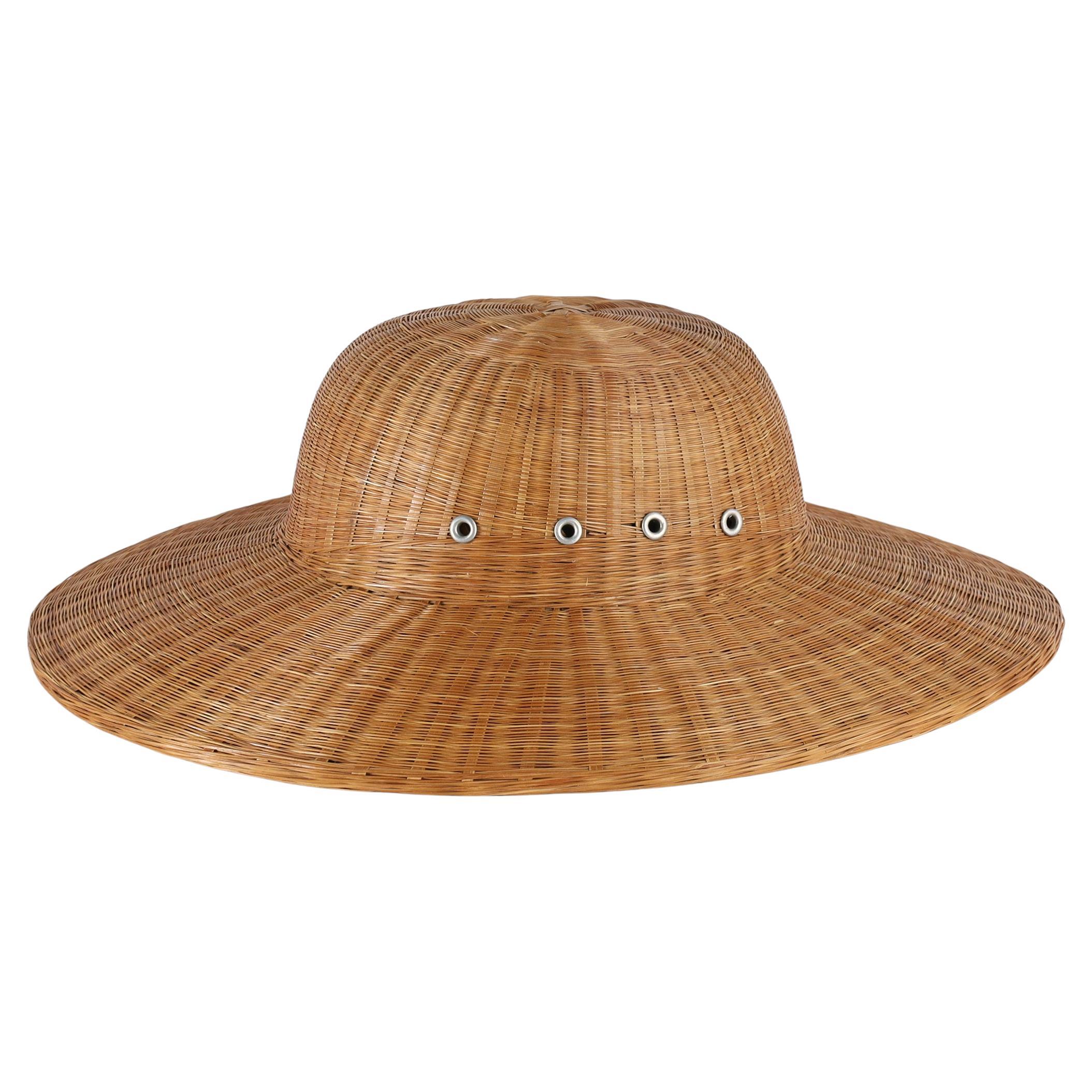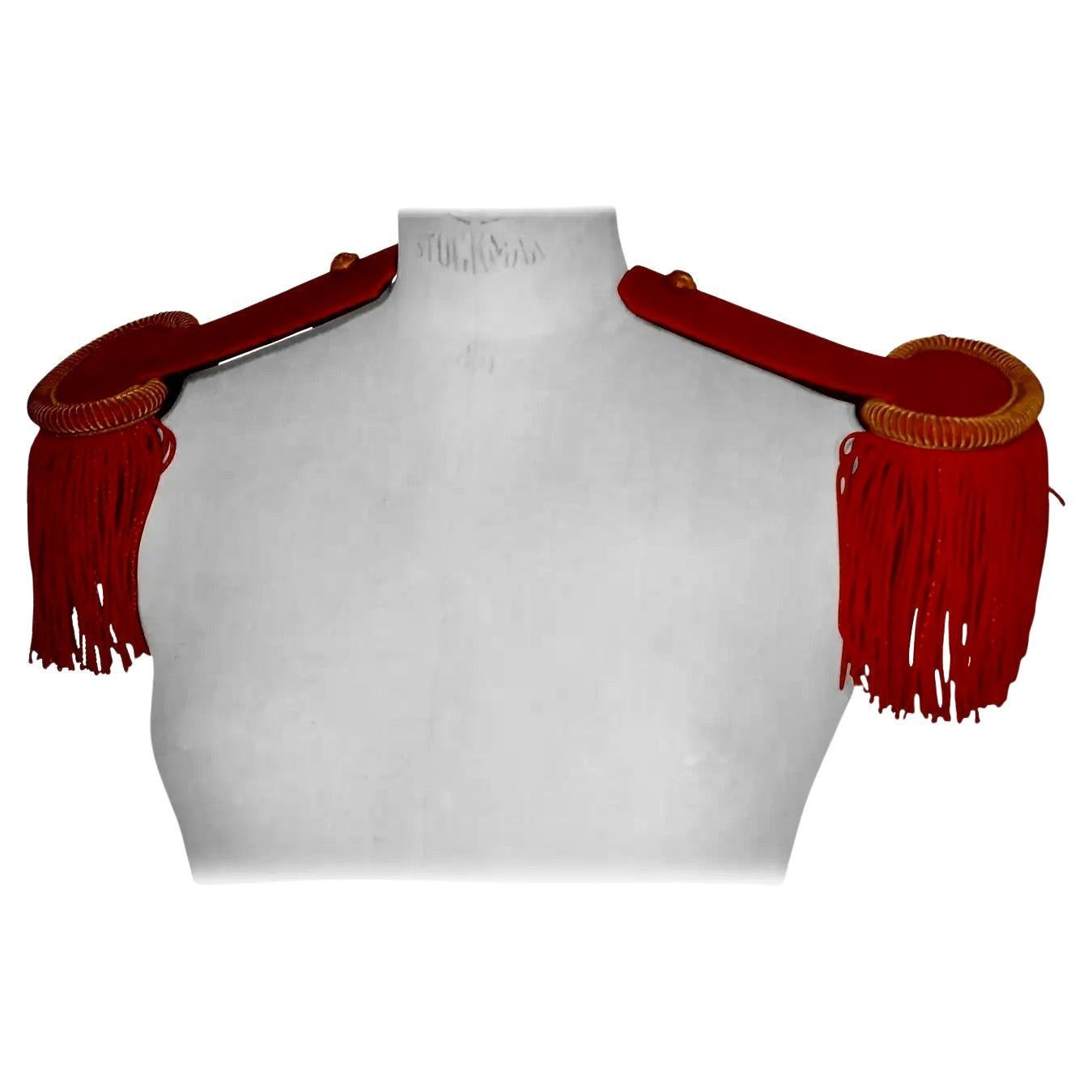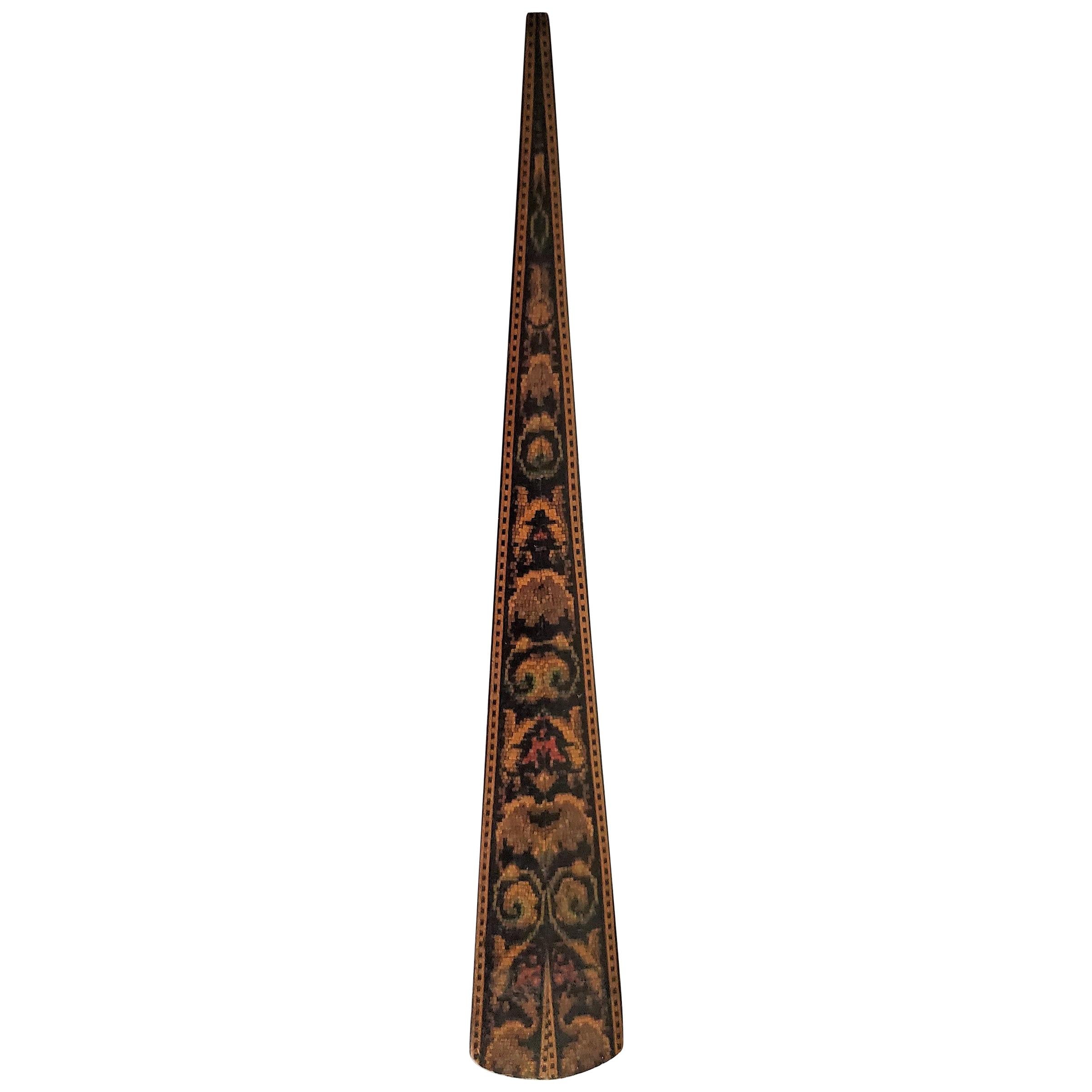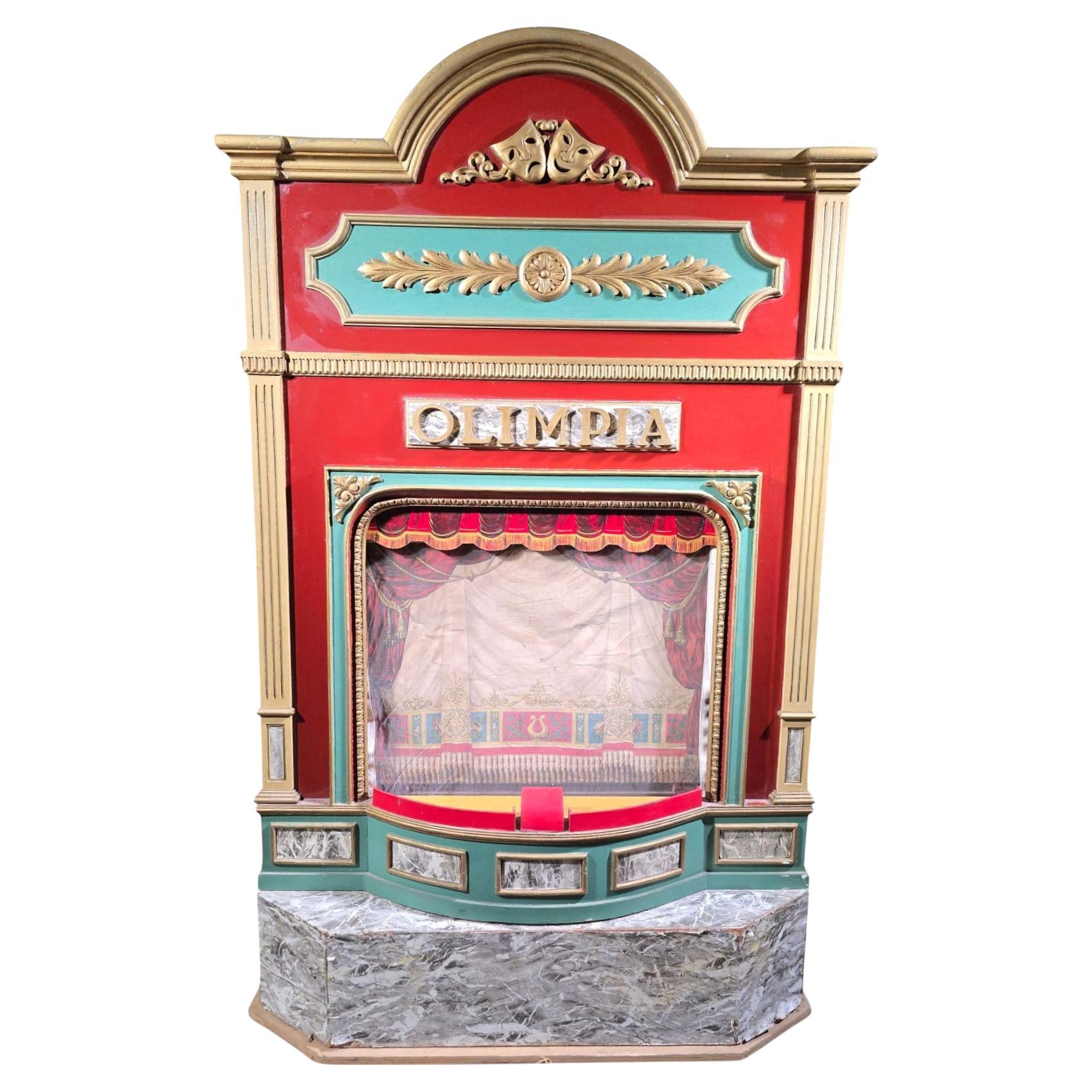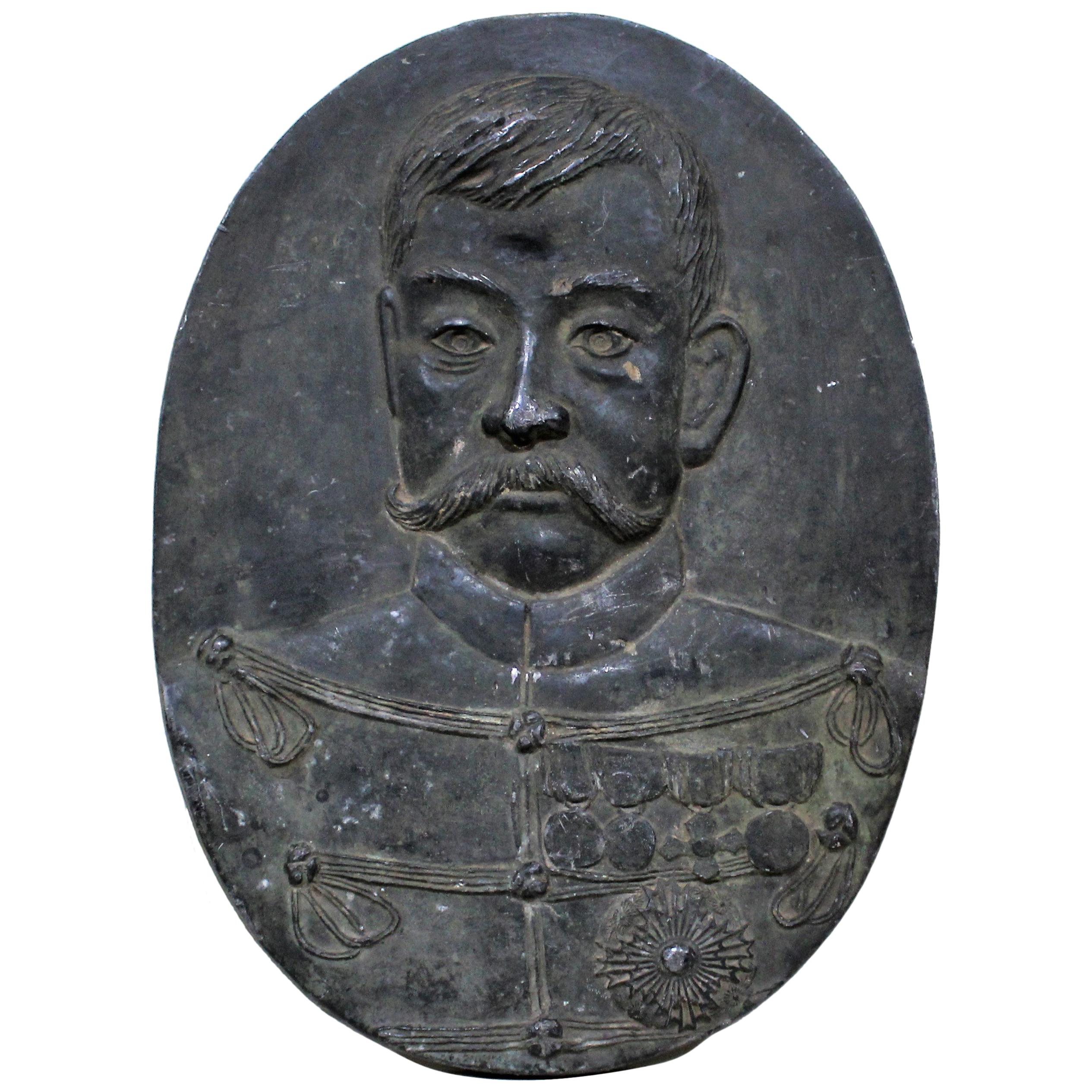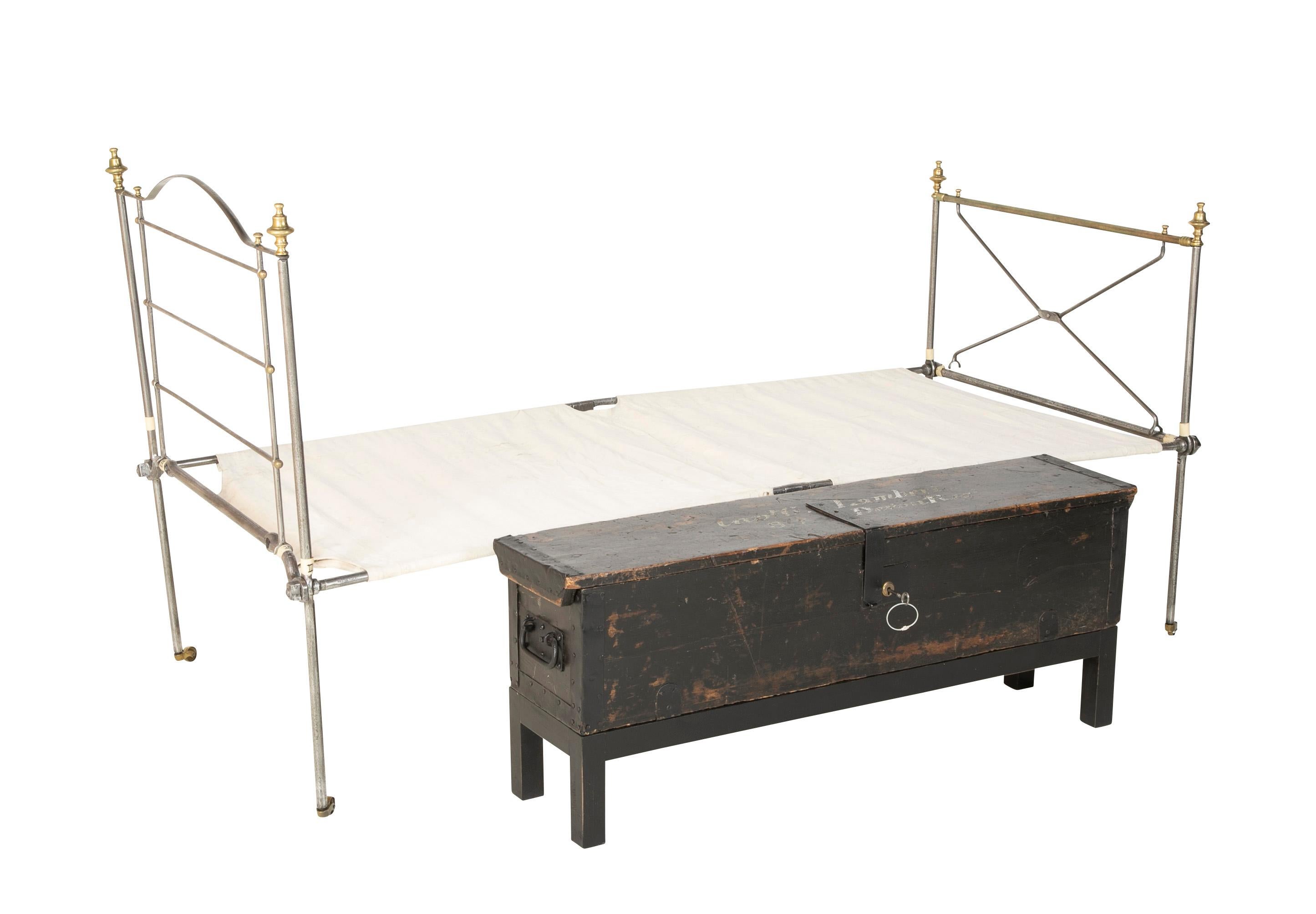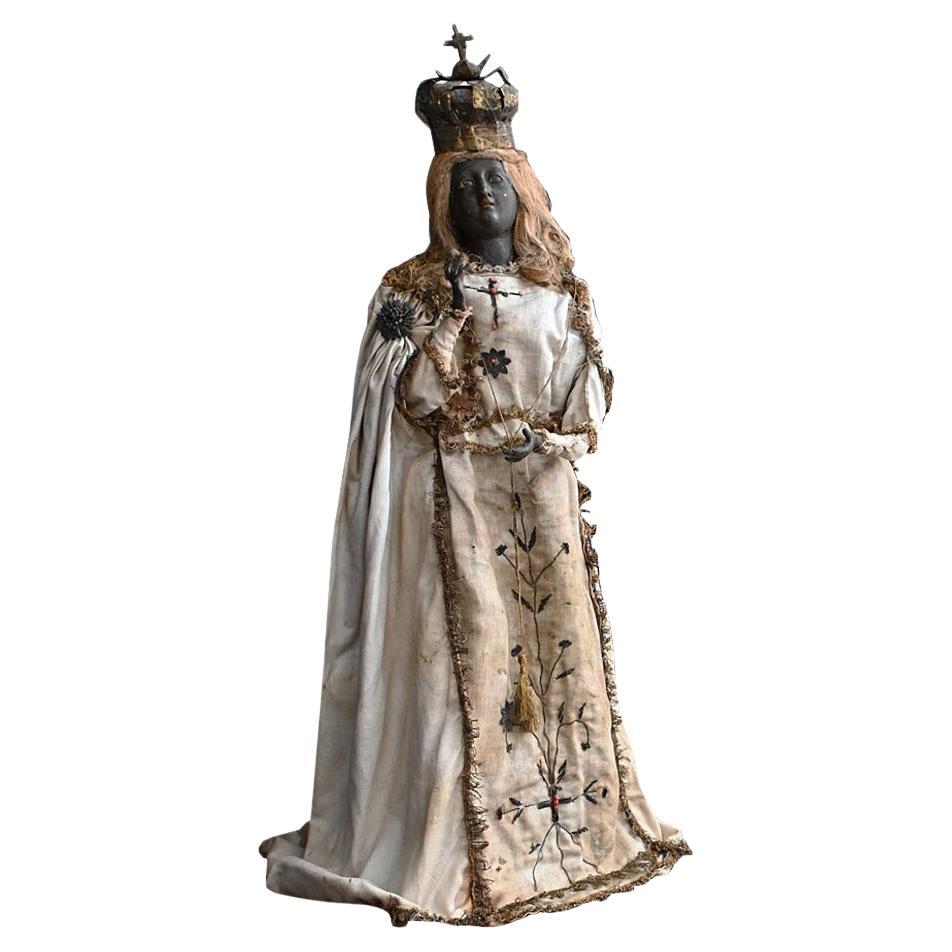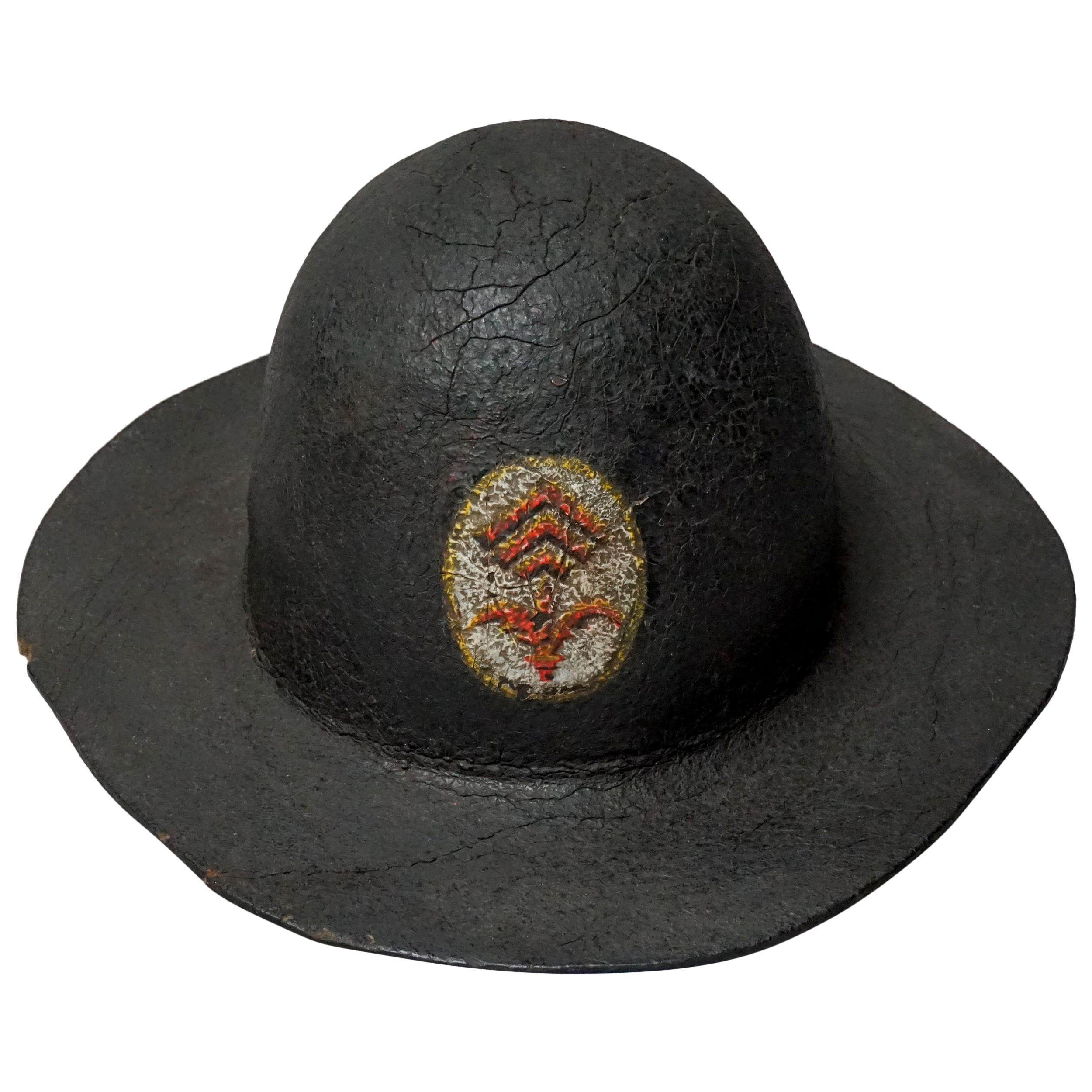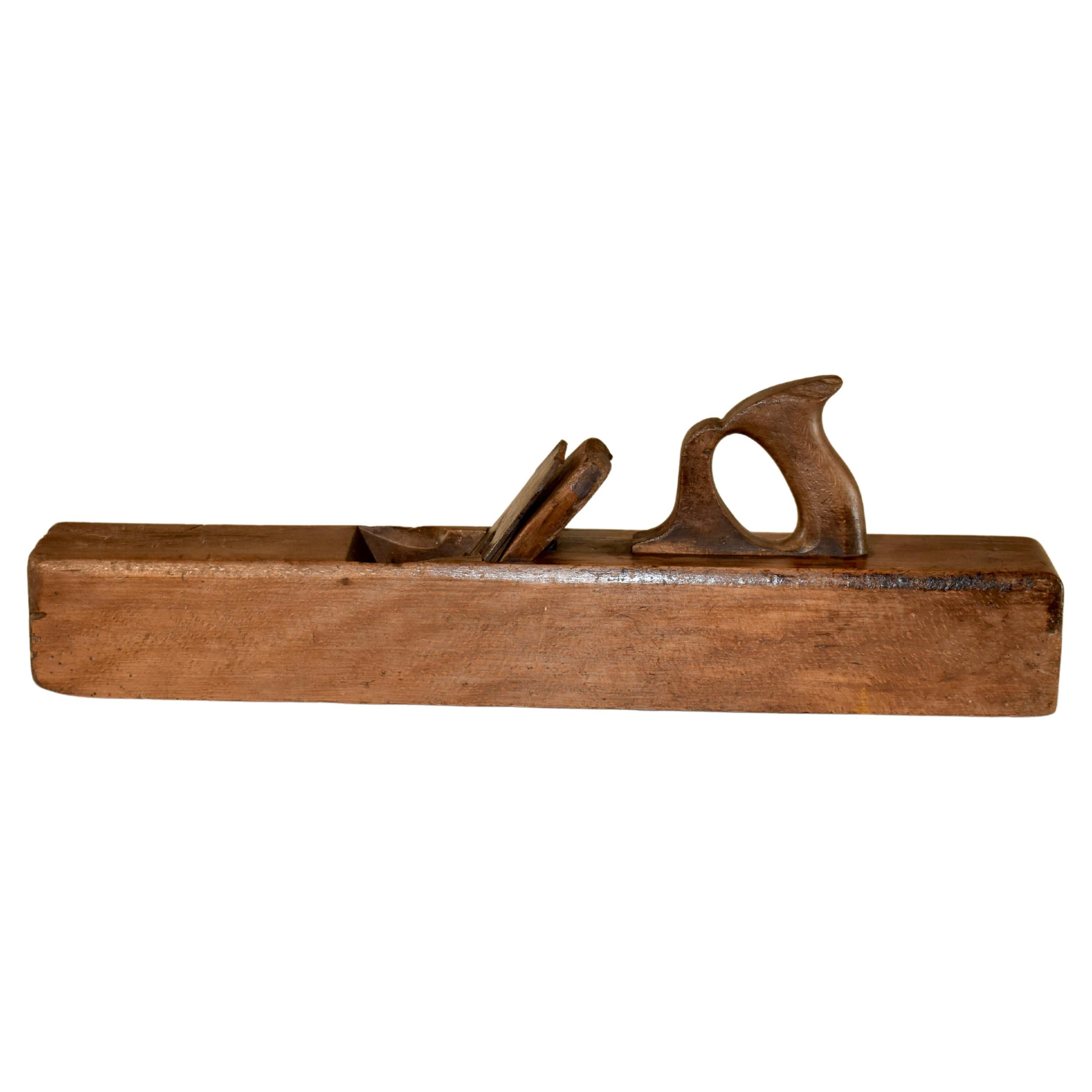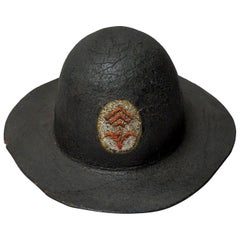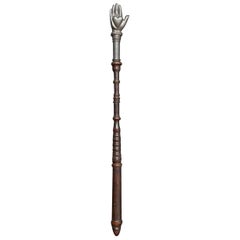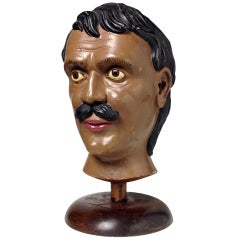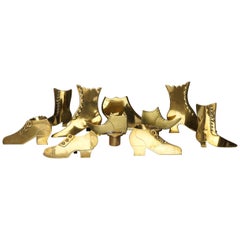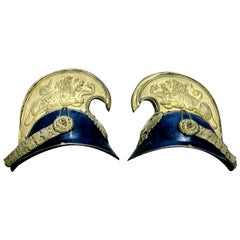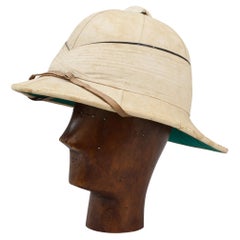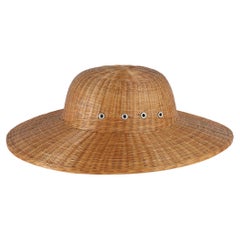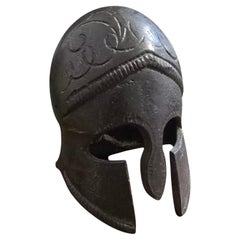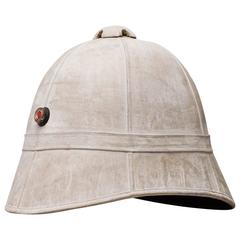
Rare 19th century Pith or Tropical Officers Helmet
View Similar Items
Want more images or videos?
Request additional images or videos from the seller
1 of 11
Rare 19th century Pith or Tropical Officers Helmet
About the Item
- Dimensions:Height: 8.67 in (22 cm)Width: 8.67 in (22 cm)Depth: 11.82 in (30 cm)
- Materials and Techniques:
- Place of Origin:
- Period:
- Date of Manufacture:Unknown
- Condition:Wear consistent with age and use. Minor fading.
- Seller Location:Haarlem, NL
- Reference Number:1stDibs: LU104043153612
About the Seller
4.9
Gold Seller
Premium sellers maintaining a 4.3+ rating and 24-hour response times
1stDibs seller since 2014
361 sales on 1stDibs
Typical response time: 2 hours
Authenticity Guarantee
In the unlikely event there’s an issue with an item’s authenticity, contact us within 1 year for a full refund. DetailsMoney-Back Guarantee
If your item is not as described, is damaged in transit, or does not arrive, contact us within 7 days for a full refund. Details24-Hour Cancellation
You have a 24-hour grace period in which to reconsider your purchase, with no questions asked.Vetted Professional Sellers
Our world-class sellers must adhere to strict standards for service and quality, maintaining the integrity of our listings.Price-Match Guarantee
If you find that a seller listed the same item for a lower price elsewhere, we’ll match it.Trusted Global Delivery
Our best-in-class carrier network provides specialized shipping options worldwide, including custom delivery.More From This Seller
View All19th Century Black Painted Leather French Primitive Fire Helmet Casque Pompier
Located in Haarlem, NL
19th century black painted leather French fire helmet with painted logo with what looks like a 'French Lily' and three hooked lines
Made out of one...
Category
Antique Mid-19th Century French Historical Memorabilia
Materials
Leather
$640 Sale Price
20% Off
19th Century Odd Fellows or Oddfellows Tin Heart in Hand on Oak Stick or Staf
Located in Haarlem, NL
Early 19th Century Odd Fellows or Oddfellows tin heart in hand on an oak stick or staf.
The basic idea behind the hand with heart is that whenever an Od...
Category
Antique 19th Century British Georgian Historical Memorabilia
Materials
Tin
$2,400 Sale Price
20% Off
19th Century Wooden Carnival, Fair or Advertisement Head of the Strongest Man
Located in Haarlem, NL
This is a very cool guy, it's a wooden head of a 19th century 'the Strongest Man of the World' attraction on a carnival or fair.
The brown color, or maybe the shape of his head, mak...
Category
Antique 19th Century Unknown Sculptures
Materials
Wood
$2,320 Sale Price
20% Off
Set of Ten 19th Century English Victorian Brass Chimney Good Luck Shoes or Boots
Located in Haarlem, NL
Four sets and two single pieces of English Victorian brass chimney ornaments or "good luck" shoes.
What a lovely collection of shiny shoes don't you think? Let me tell you a little bit about them,
during the Victorian period in England, it was fashionable to have a pair of "good luck" brass shoes on your mantel (fireplace), they would been given to you as a wedding gift.
Two sets were definitely match stick holders...
Category
Antique Mid-19th Century British Victorian Models and Miniatures
Materials
Brass
$1,320 Sale Price / set
20% Off
19th Century Carnival Folk Art Carved Wooden Head with Zinc Hat
Located in Haarlem, NL
This head is from a fair or carnival game.
Not sure what the game was, perhaps the head has been used to toss rings over, or maybe you were supposed to throw something in his mouth....
Category
Antique Late 19th Century Unknown Carnival Art
Materials
Zinc
$2,000 Sale Price
20% Off
19th Century Plaster Museum Piece "Welcome" Gold Nugget Model Victoria Australia
Located in Haarlem, NL
Huge 19th century plaster museum piece "Welcome" gold nugget model Victoria, Australia.
This is rare.
It’s the only thing left of the biggest gold nugget ever found, the Welcome ...
Category
Antique Late 19th Century Oceanic Models and Miniatures
Materials
Plaster, Wood
$3,600 Sale Price
20% Off
You May Also Like
19th Century Austrian Helmet
Located in Buchanan, MI
Handsome 19th century Austrian helmet.
Helmet has been separated into two parts so they can be flush mounted to a wall.
Category
Antique 19th Century European Arms, Armor and Weapons
Materials
Metal
$1,800 / set
Polo Or Pith Helmet By Gieves Of London
Located in Oxfordshire, GB
Gieves Royal Navy Officer's Tropical Helmet, Pith Helmet, Solar Topee.
A good Gieves Ltd. 'Wolseley pattern' solar topee (also known as a pith helmet, safari helmet, sun helmet or so...
Category
Early 20th Century British Sports Equipment and Memorabilia
Materials
Canvas, Cork
Vintage Campaign Anglo Indian Wicker Pith Helmet
Located in Palm Beach, FL
Transporting British Colonial Anglo Indian pith helmet or hat ambitiously handcrafted in woven reed or wicker in classic form with metal breather holes and plenty of tropical charm. ...
Category
Mid-20th Century Indian British Colonial Sports Equipment and Memorabilia
Materials
Wicker, Reed
19th-Century Miniature Greek Helmet in Bronze
Located in Madrid, ES
19th-Century Miniature Greek Helmet in Bronze
Material: Bronze with aged patina
Dimensions: 4 x 7 x 4 cm
A captivating 19th-century miniature bronze helmet, inspired by the legendar...
Category
Antique 19th Century European Hellenistic Arms, Armor and Weapons
Materials
Bronze
19th Century French First Officer’s Uniform Red Epaulettes
Located in Godshill, Isle of Wight
19th Century French First Officer’s Uniform Red Epaulettes
Good pair of French Officers Epaulettes made in Red Silk and lined in black velvet, the f...
Category
Antique Late 19th Century Federal Historical Memorabilia
Materials
Wool
Rare 19th Century English Tunbridgeware Hair Pin or Slide
Located in Dallas, TX
PRESENTING an EXTREMELY UNIQUE and RARE 19C British Tunbridgeware Hair Pin/Bobbin or Slide.
This slide is unlike any of it’s kind we have seen before, it is a VERY RARE survivor.
From circa 1860 – 80 and made in Tunbridge Wells, England.
Made of walnut with gorgeous marquetry inlay on the entirety of the front with classic Tunbridgeware micro-mosaic all over the front. The rear is walnut.
The marquetry inlay appears to be various different woods, namely, maple, walnut and satinwood.
Would have been worn in a Lady’s hair bun with the micro-mosaic facing forward.
This would have belonged to a VERY ELEGANT LADY in the mid to late 19th Century.
Tunbridge ware is a form of decoratively inlaid woodwork, typically in the form of boxes, that is characteristic of Tonbridge and the spa town of Royal Tunbridge Wells in Kent in the 18th and 19th centuries. The decoration typically consists of a mosaic of many very small pieces of different coloured woods that form a pictorial vignette. Shaped rods and slivers of wood were first carefully glued together, then cut into many thin slices of identical pictorial veneer with a fine saw. Elaborately striped and feathered bandings for framing were pre-formed in a similar fashion.
There is a collection of Tunbridge ware in the Tunbridge Wells Museum and Art Gallery in Tunbridge Wells.
The famous makers of Tunbridge ware were in the Tunbridge Wells area of Kent; their most notable work was from circa 1830-1900.
Early makers of Tunbridge ware, in Tunbridge Wells in the mid-18th century, were the Burrows family, and Fenner and Co. In the 19th century, around 1830, James Burrows invented a technique of creating mosaics from wooden tesserae. Henry Hollamby, apprenticed to the Burrows family, set up on his own in 1842 and became an important manufacturer of Tunbridge ware, employing about 40 people.
Edmund Nye (1797–1863) and his father took over the Fenner company when William Fenner retired in 1840, after 30 years in partnership with him. Thomas Barton (1819–1903), previously apprenticed at the Wise factory, joined the Nyes in 1836, and worked as Nye’s designer; he took over the business in 1863 and continued there until his death.
In Tonbridge (near to Tunbridge Wells), George Wise (1703–1779) is known to have had a business in 1746. It continued with his son Thomas, and Thomas’s nephew George (1779–1869), who took over in 1806. In its early years the company made articles such as workboxes and tea caddies with prints of popular views; later items had pictures created from mosaics. Their workshop in Tonbridge, Wise’s Tunbridge Ware Manufactory, was next to the Big Bridge over the Medway; the building was demolished in 1886 to widen the approach to the bridge.
Tunbridge ware became popular with visitors to the spa town of Tunbridge Wells, who bought them as souvenirs and gifts. Articles included cribbage boards, paperweights, writing slopes, snuffboxes and glove boxes.
At the Great Exhibition of 1851, Tunbridge ware by Edmund Nye, Robert Russell and Henry Hollamby was shown; Edmund Nye received a commendation from the judges for his work. He exhibited a table depicting a mosaic of a ship at sea; 110,800 tesserae were used in making the picture.
The manufacturers of Tunbridge ware were cottage industries, and they were no more than nine in Tunbridge Wells and one in Tonbridge. The number declined in the 1880s; competent craftsmen were hard to find, and public tastes changed. After the death of Thomas Barton in 1903 the only surviving firm was Boyce, Brown and Kemp, which closed in 1927.
Marquetry was an old technique which was continued by Nye and Barton to create images such as birds or butterflies.
‘Green Oak’ as caused by the fungus Chlorociboria aeruginascens.
Stickware and half-square mosaic was invented by James Burrows in about 1830: a bunch of wooden sticks of different colours, each having triangular or diamond-shaped cross section, were tightly glued together; in the case of stickware, the resulting block was dried, then turned to form an article such as the base of a pincushion. For half-square mosaic, thin slices were taken from the composite block, and applied to a surface.
Tesselated mosaic, was a development by James Burrows of half-square mosaic; it was adopted by George Wise and Edmund Nye. Minute tesserae were used to form a wide variety of geometric and pictorial designs.
Many sorts of wood were used for the various colours; about 40 were in regular use. Only natural colors were used; green was provided by “green oak”, produced by the action of fungus on fallen oak. Designs for articles were often taken from designs of Berlin wool work.
Category
Antique Late 19th Century English High Victorian Collectible Jewelry
Materials
Satinwood, Walnut
